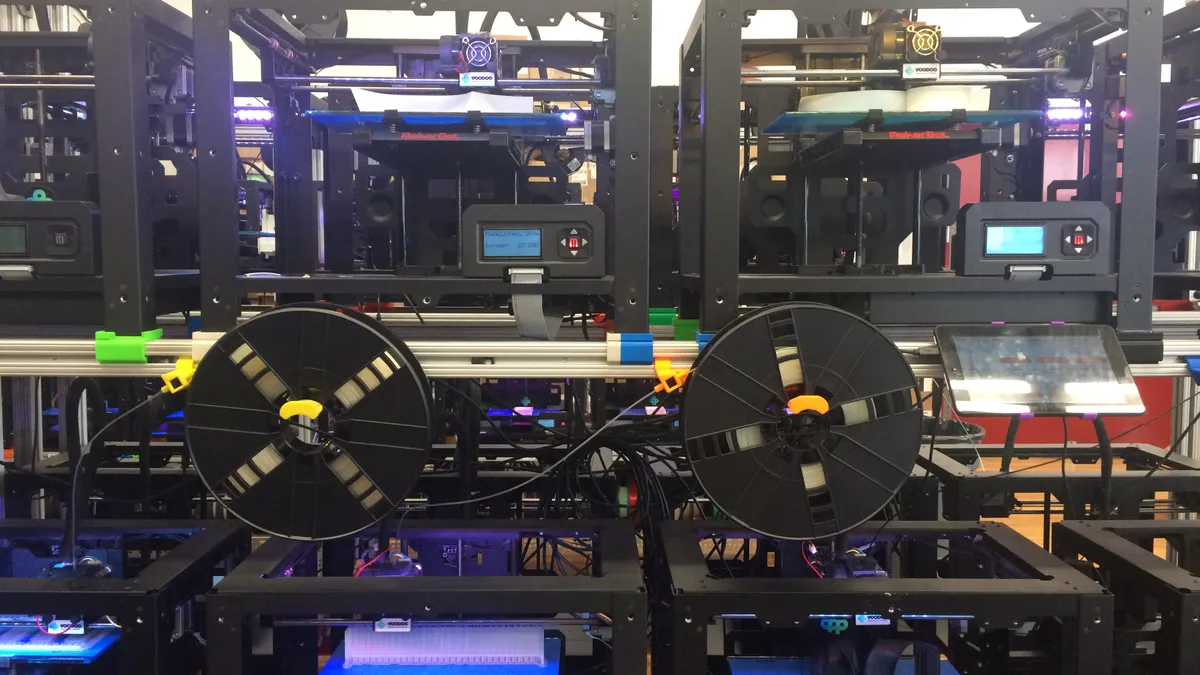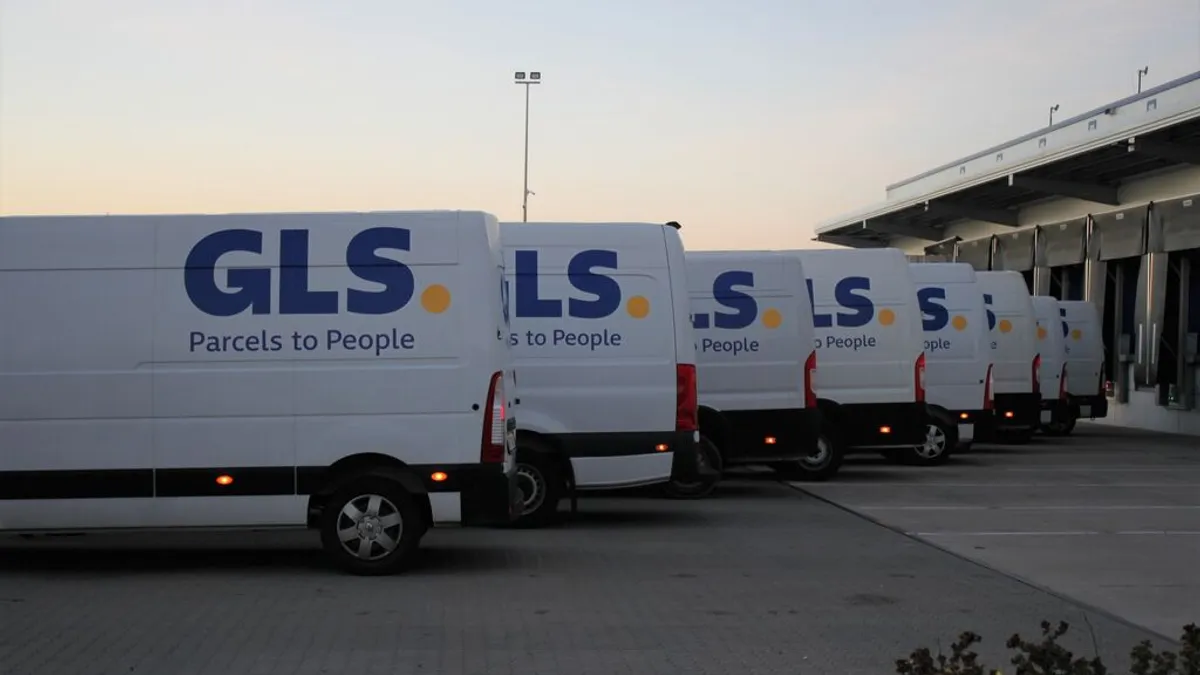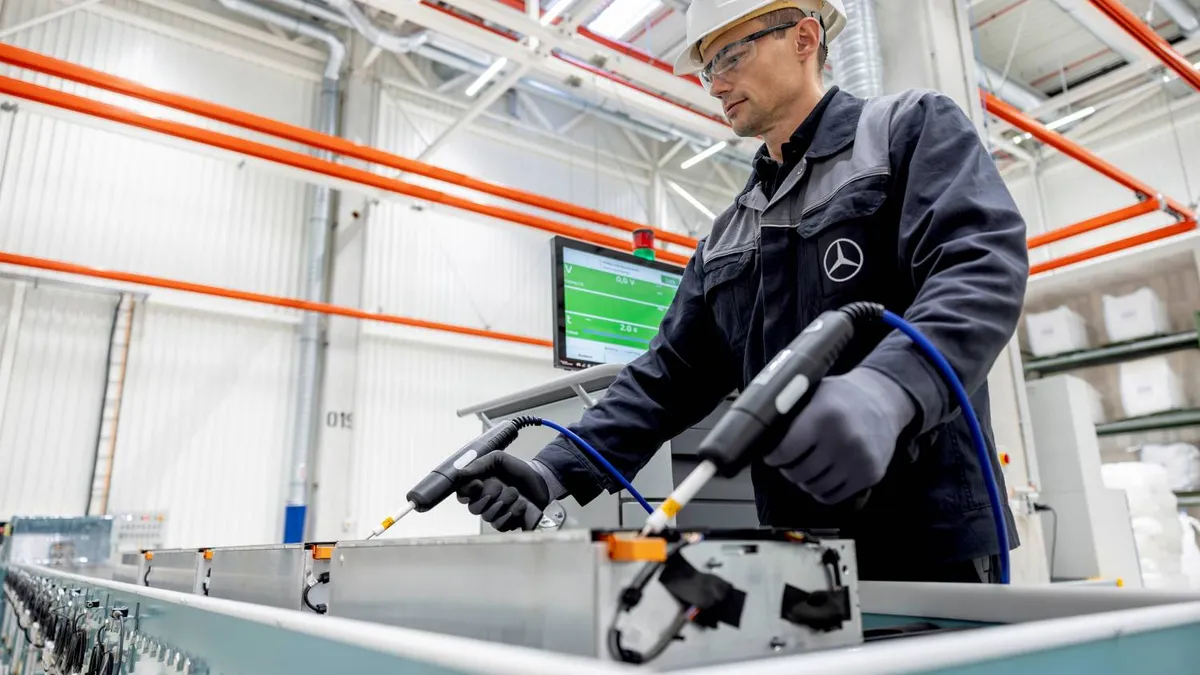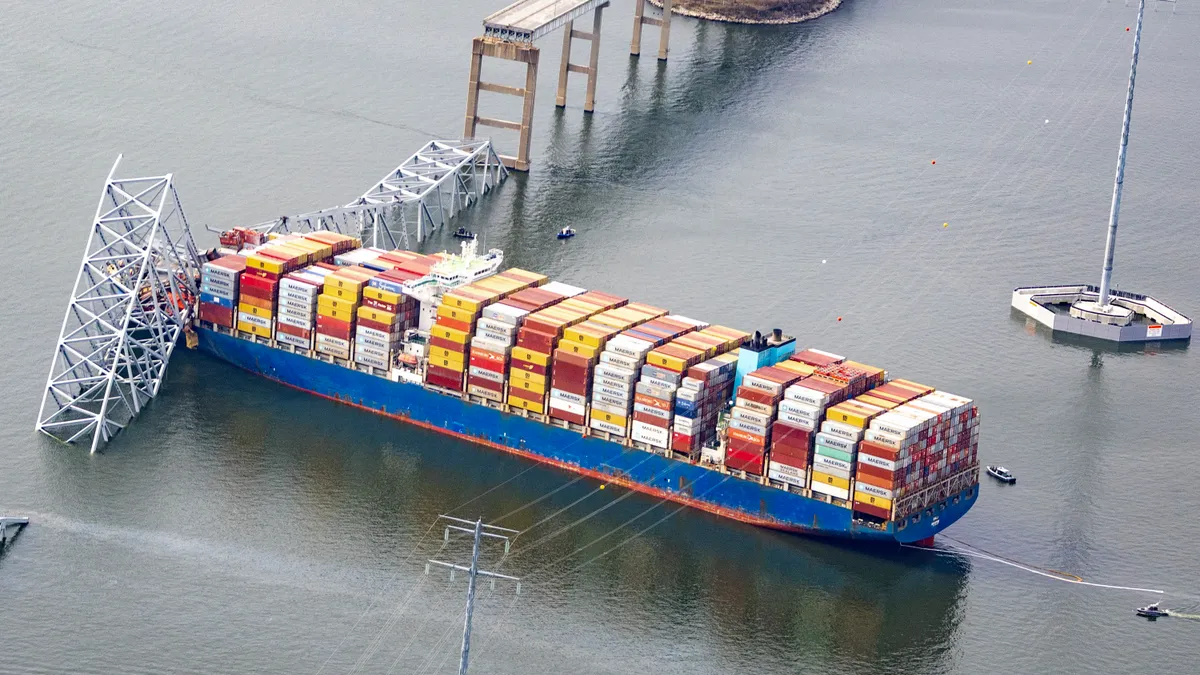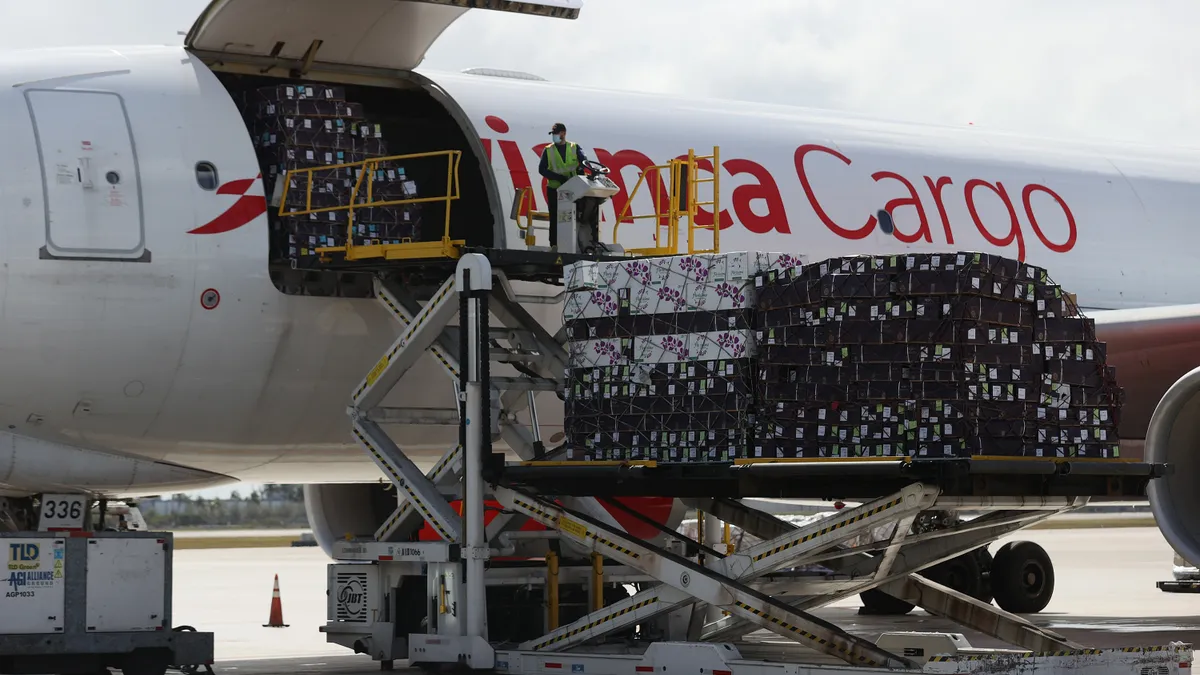A start-up manufacturing company in Brooklyn wants to change how low volume industrial parts are produced: with rows and rows of 3-D printers and a robot to operate them. But this particular start-up — Voodoo Manufacturing — is also defying stereotypes. Automation and 3-D printing are not destroying or eliminating jobs at Voodoo. On the contrary, the company is in the middle of a hiring spree and plans to add eight more people to its 20-person team as soon as possible.
And that’s not the only thing that makes Voodoo so different from other manufacturers: Voodoo considers itself a traditional B2B manufacturer, but more and more the company operates as a B2C. The company’s approach is revolutionary: not only is Voodoo reducing production lead times with 3-D printing, but it’s also slashing prices and and is part of a 3-D printing trend that could put traditional manufacturers out of business.
On the fourth floor of a multi-purpose building in Brooklyn, employees sit at Mac computers — designing prototypes and tinkering with software — while in the room next to them, 160 3-D printers whirr quietly, working on the latest projects.
Each printer could theoretically be working on different projects simultaneously, but Mike Baumgarten, Voodoo's director of marketing, told Supply Chain Dive there are usually only 6-12 projects per day. Voodoo produces prototypes and finished small parts for a wide range of companies: they’ve worked with Verizon, Mattel, Lowe’s, Syfy and Universal, to name a few, but also art students as well.
“We do a lot of Pratt architectural models,” Baumgarten said. “We have a deal with Pratt Institute students, so we’ve been getting a lot of those lately.”
3-D printing accelerates the prototype process
Right now, it’s cheaper for many companies to work with Voodoo rather than a traditional manufacturer using injection molding to get a prototype for a project or produce a low volume of finished products (depending on the project).
“Injection molding has a lot of upfront costs,” Baumgarten said. “A project that costs $5,000 may only cost $800 with 3-D printing.”
But as the volume of an order increases, it gets cheaper. Voodoo’s 3-D printing is more cost effective for companies and individuals only up to 10,000 units per order. Beyond a 10,000-unit order, injection mold manufacturing is cheaper.
“We have a really good repeat rate, which is exciting. We can repeat so many different verticals and industries at the same time,” Baumgarten said.
The goal is to reduce the unit cost of 3-D printing so that Voodoo is cheaper no matter how large the order. At the moment, the start-up seems to be on the right track. The company secured $5 million in a crowdfunding effort in May to help fund its Project Skywalker, which entails rows of robotic arms operating the 3-D printers, so that Voodoo can start, continue and finish projects for clients “without adult supervision.”
According to Voodoo’s blog post about Project Skywalker, the company wants “a digital future for manufacturing where lead times are short, iteration cycles are fast, products can be customized, and runs can start small and scale instantly.”
Skywalker will help them do that.
Voodoo wants to be cheaper, faster, better and closer to its customers
Phase 1 of Project Skywalker involved installing one robot arm to operate nine 3-D printers all by itself. Eventually, Voodoo co-founder and CEO Max Friefeld hopes the arm will be able to operate 100 printers at a time, using a variety of materials: plastics, metals, fabrics and more.
“What it does is get us a night shift without having to hire a full (human) night shift,” Friefeld told Supply Chain Dive. “We’re not just focused on 3-D printing, we’re focused on plastics, and 3-D printing is our core market today. This is everything from promotional products to custom goods to hardware components and plastics with electronics and laser cut parts — we’re basically trying to take this market with high upfront costs and long lead times and quickly scale from prototype to production without having to invest thousands of dollars and spend 6-12 months on projects.”
[We're trying to help] quickly scale from prototype to production without having to invest thousands of dollars and spend 6-12 months on projects.

Max Friefeld
Voodoo Co-Founder and CEO
To Friefeld, Skywalker isn’t just about introducing more robotics to the company, it’s also about slashing costs so that the production price per unit will fall, because Voodoo wants to be faster, cheaper, and better than traditional manufacturers.
“We’ve put together a cost reduction plan to reduce 90% in costs over the next few years,” Friefeld said. “The pieces for what we’re trying to achieve are available today. The only thing stopping us is how quickly we engineer the solution and grow to hit scale.”
Industrial manufacturing needs human and automated labor
Friefeld thinks Voodoo has the right tools to grow quickly, because it’s a unique combination of human and automated labor. For Friefeld, the most important part of that combination is flexibility, because flexibility within Voodoo’s supply chain will help the company grow quickly, but reliably. By establishing an effective, dependable supply chain of humans and robots that requires less labor, Voodoo plans to beat out the traditional manufacturer on every project.
“Historically robots are rigid, humans are flexible. You can build a robot that can do one thing and does that one thing really well and can’t pick up new tasks. 3-D printers are robots, but they’re flexible,” he said. “We can build robots on top of that and automate an entire system that produces any plastic part — there’s no molds, there’s no tooling that requires engineering costs up front. The system itself is built to be reliable.”
The system itself is built to be reliable.

Max Friefeld
Voodoo Co-Founder and CEO
Voodoo believes automation will usher in a new era of “lower costs, faster innovation cycles, and higher-quality products,” with regionalized factories so that production is closer to customers. If Voodoo succeeds, then it and other companies like it may completely overhaul traditional manufacturers’ supply chains.
“Our goal is basically to change how low volume parts are produced,” Friefeld said.


